An interview with Shaun Tan
The Children’s Book Review
Shaun Tan is a highly-acclaimed artist, writer, and filmmaker who has received an Academy Award for the short, animated film The Lost Thing, the Astrid Lindgren Memorial Award in Sweden, and the Kate Greenaway Medal in the UK, among many other prestigious awards. He is best known for his illustrated books that offer an interpretation of social and historical issues using stunning, abstract, and often otherworldly artwork. His books have been translated and read widely across the globe, alluring readers of all ages.
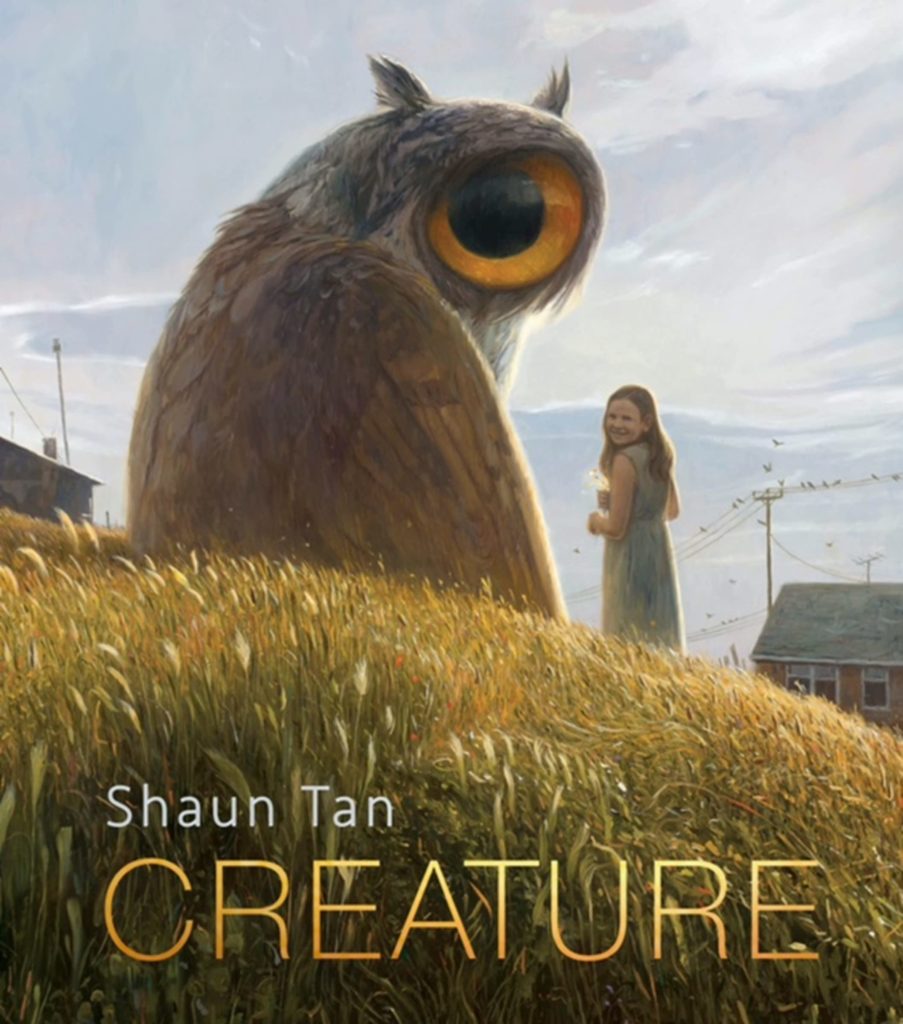
Writing from across the big pond in Melbourne, Australia, Shaun shares what went into the making of his latest book, Creature: Paintings, Drawings, and Reflections, which is sure to be a massive inspiration to incoming and upcoming artists, as well as illustration enthusiasts, and fans of his previous books. He talks about his favorite art medium to work with and divulges his most used art supply. And if you’ve ever wondered who or what inspires such a talented creator, you’ll find that out here, too!
I’d love to begin with the simple but profound question: Why do you make art?
Shaun Tan: Well, I could give you the whole long-winded artist’s statement about inspiration, self-expression, and cultural connection, but the short answer is really very simple: it’s fun. It’s fun to paint and draw things. That feeling has not changed much since my earliest memories of holding a pen or crayon.
Of course, there are many other reasons that follow, such as the desire to record an experience, to share a thought, to tell a story, to make a living. But it all begins as a very simple pleasure, as I heard one child put it, ‘to have a think and put a line around my think’, and the artist Paul Klee, ‘to take a line for a walk.’ Profound, complex ideas often follow from such simple actions, including deep insights into life and a sense of interconnectedness, personal insight, even social and political commentary.
But those things are almost never uppermost in my mind when I first put pencil or brush to paper or canvas. Instead, I’m thinking, ‘gosh, I’d really love to paint that tree’ or ‘I wonder what happens if I draw a strange creature in a suburban backyard.’ It’s a very simple and humble entry point into deeper, more complex thinking and feeling.
Besides picture book creator, you have worn many hats: comic creator, painter, and filmmaker. CREATURE: PAINTINGS, DRAWINGS, AND REFLECTIONS is a collection of essays that share your thoughts and advice for writers and artists. When did the seed of the idea for this book begin to blossom?
Every artist has a vast library of unseen work if they’ve been working for a long time, and I’ve always enjoyed seeing this when visiting other artists’ studios: sketchbooks, unrealized stories, experiments, things done just for fun, but which don’t necessarily get published or exhibited. This material can offer great insight into a person’s true passions and interests, as well as idiosyncrasies, and has a real sense of authenticity, of not trying to fit any specific commercial or cultural purpose.
Some years ago, a friend suggested I publish a small book of sketches, things I would not normally show to anyone. I didn’t expect it to be received by anything other than a very niche readership, people interested in sketching and the developmental work that goes on behind books, film, and theatre. Well, it turns out there are a lot of those people! THE BIRD KING ended up being surprisingly popular and widely translated (including all my scrappy little notations).
For years I wanted to follow this up with something more considered, which also includes finished paintings and favourite illustrations. Many of these are singular images that suggest stories but don’t benefit from further elaboration and so are not really publishable, being too small. But all together, I realise they work very well in building up a larger picture, showing a way of working with visual narrative.
The notion of ‘creature’ became a binding theme to help in this selection, as I noticed that animals and imaginary creatures recur in one form or another in my drawings and paintings since early childhood. I wanted to delve deeper into what that might mean, why there is such an abiding attraction to these non-human protagonists, and reflect on three decades of freelance illustration at the same time.
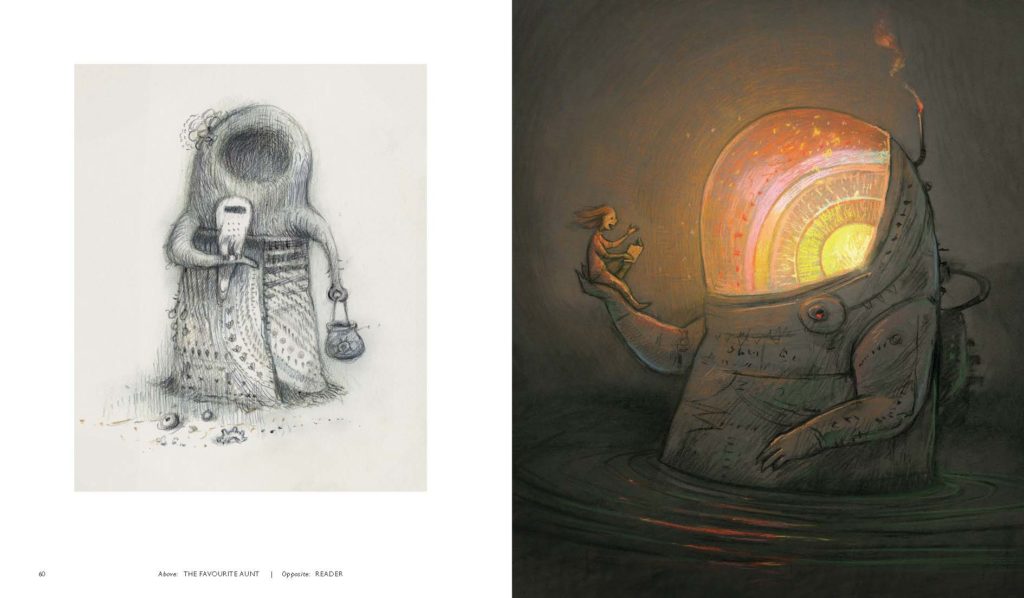
Who did you create it for? Who do you imagine reading and using CREATURE?
You know, I’m not sure. But then again, I’ve never had much preconception about audience with any of my books, and defer to publishers, booksellers, teachers, and librarians to make such decisions. What I can say is that each book is just the kind of work I would like to read myself, and I think this is as good a guide as anything, an intuition I’ve learned to trust.
I would have been especially attracted to a book like CREATURE as a young illustrator starting out, uncertain whether to follow my personal passions and quirks or try and conform to a more ‘successful’ commercial style and subject. It would reassure me that drawing and painting the things I love the most is probably the way to go. If you do something with passion, no matter what it is—even drawings of weird animals—that inspiration will be felt by others. Well, one can hope!
To be honest, I’m curious to see who will respond to this collection, and how, and why.
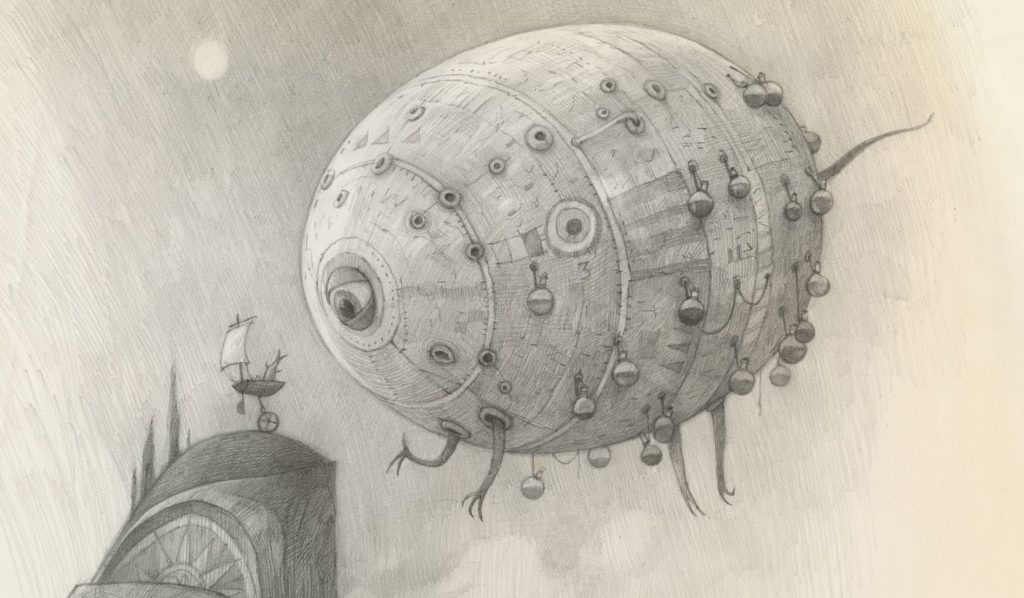
Not only does this book include sketches from THE ARRIVAL, THE LOST THING, and TALES FROM OUTER SUBURBIA, but there are more than 100 unseen and stand-alone illustrations that readers of your book will see for the first time. How did you decide which art pieces you wanted to include in this book?
Each image needed to be interesting and comprehensible in its own right but also work together with others so that the whole is greater than the sum of parts to give some sense of singular artistic interest. In the case of CREATURE, I think that interest is a search for real-life metaphors. Every creature I draw or paint is some attempt to access memories and feelings to do with familiar reality without going through the ‘front door’ of direct representation. Instead, I’m interested in finding a ‘back door’, an indirect representation.
There is an image, for instance, of a boy playing cards at a table of strange creatures, and I think this is inspired by memories of gambling with my grandparents and cousins as a young child, in a haze of cigarette smoke no less, a dubious pastime at best, but one I recall with fondness. Had I represented this exactly as it appeared, with my actual grandparents and cousins, I’m not sure I’d be able to access those memories so well, nor present them in such a general, accessible way as these strange substitutions allow. These rabbits, frog-like and reptilian things take those feelings and broaden their context beyond any specific situation, beyond the personal. Like a dream, it becomes very open to interpretation by different readers.
We all have different families and life experiences, but I think we are all connected by underlying emotions, ideas, and story shapes, and those are the things I’m most interested in. What are those underlying emotions, ideas, and story shapes?
Were there any pieces that almost made the cut but didn’t make it into the final book?
Yes, many, but it’s not possible to include everything, nor is it desirable. There are many paintings and drawings that I would love to show, but they did not work in the context of this book’s theme. There are also more polished, considered artworks that I chose to leave out in favour of quick, spontaneous drawings.
For example, some sketches from RULES OF SUMMER are included instead of the final oil paintings because I think these give a better sense of process and visual thinking. They are somewhat unfinished and exhibit a degree of hesitation and revision, an essential aspect of all drawing. They show the testing of ideas, the figuring out, the sense that there are a thousand possible ways to resolve a drawing outside of the final realization. I think that’s the most exciting part of art-making to me, that feeling of open possibility.
Many of the sketches in this book were never intended to be published—especially the cover and endpapers, which are taken directly from my personal sketchbooks—and I think that makes them all the more interesting. They better represent drawing as a project that is never finished, that has no endpoint. It’s all about process. That’s an important thing for younger artists to know, as it took me a while to fully realise myself. That art is less about making nice pictures than it is about developing a personal process, of simply moving the hand and eye, without thinking too much in advance about objectives, results, or ‘success’.
Don’t put the cart before the horse. Just love the horse, lead it patiently, and the cart will naturally follow.
Since you explore and experiment with art, from casual doodles to studied oil paintings, do you have a favorite art medium that you prefer to work with and use? What would you say is your most used art supply or tool?
An HB pencil and a piece of standard copy paper. This hasn’t changed much since I was about six, and an uncle once gave me a big box of HB pencils, I think some excess stock from the electronics company he managed in Penang. My parents always kept a stack of paper in a home office, next to a typewriter (remember those?), and I also used to draw on the back of my dad’s architectural plans when he no longer needed them, wonderfully large pieces of paper.
As a practicing professional now, I essentially like anything that I can erase or paint over because I always change my mind, want to move lines, or adjust colours. Oil paint is my other go-to for this reason, it invites revision, unlike other media such as ink and watercolour, where you really need to know what you are doing, and I often don’t. Charcoal and pastels are my other favourites, being so impermanent, so easily dusted off and redrawn.
Most of the art techniques I use today are the same as those I learnt in high school, which was then just on the cusp of the digital era: a single computer sat in a corner of the art room with an early version of Corel Draw, as basic as you can imagine. It was difficult in the late ‘80s to see the practical applications of it or how computers would revolutionize design, illustration, and film.
I now use digital media a lot for preliminary book design and image adjustment, but never for painting itself, which I always execute with physical pencils and paints. Aside from the fact this is what I’m used to, I also appreciate the accidents and resistances of physical media, the texture, the material relationship to the world. I don’t want to have full technical control, or the ability to undo actions, I know I will get stuck polishing and editing when I need to just move forward and take risks. Some of my best work has come about from trying to fix a mistake, a certain degree of material struggle, and then realizing a better, simpler way of doing things.
Do you have a favorite place you go to create and illustrate?
I used to think that I needed a special space, with all my furniture and materials just so, but I’ve since learned it doesn’t really matter. Over several house moves, studio rentals, and changing life situations, including pandemic lockdowns—during which much of CREATURE was developed—I’ve come to make do with whatever is available. Interestingly, I used to get a lot of good ideas during long plane flights (not uncommon in Australia), the most restrictive ‘studio space’ you can imagine, trapped in a metal cylinder in the sky. Just working with a small sketchbook and a biro, barely able to move my elbows. Imagination doesn’t need much room to flourish, I suppose.
What or who inspires you?
Too many things or people to list. I’m interested in anything that sits in that liminal space between familiar and unfamiliar, so a lot of magic realist fiction and surrealist painting, but where the ‘strange’ elements are very subtle, perhaps even not at first noticeable. As a painter, I’m inspired by seasonal change and the way light transforms landscapes and objects according to the time of day and weather. I’m very mindful of this when illustrating a story, too, asking what time of the day or night it is, if it is windy, rainy, hot or cold. All such things can be suggested in an illustration and can carry emotional weight.
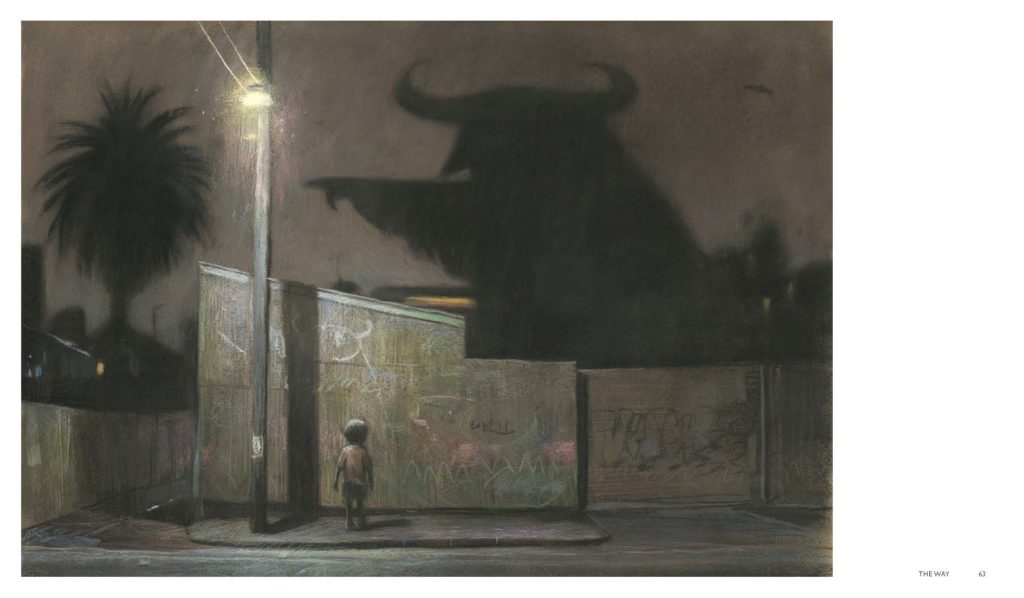
You have received incredible recognition for your work, including an Academy Award for the short animated film “The Lost Thing,” the prestigious Astrid Lindgren Memorial Award in Sweden, and the Kate Greenaway Medal in the UK. What does it mean to you to have received such high praise for your artistic expressions over the years?
It’s incredibly reassuring. Like most artists, I’m often troubled by doubt, uncertain whether my work is good or not. Interestingly this has not changed over years of practice and experience; I still feel similar levels of anxiety about quality and purpose as when I was a student. Perhaps it’s an essential part of good art-making, that constant self-questioning and trying hard to overcome it. Awards are certainly not the objective of creative practice—that would be crazy—but they are very encouraging; they make you feel you are not deluded in spending so much time focusing on such idiosyncratic projects like ‘The Lost Thing.’
Some key awards in the early phase of my illustration career, most notably winning Australia’s most important picture book prize for a book, The Rabbits, a story of violent colonization that previously received mixed reactions, helped keep me afloat, both artistically and materially, earning royalties and paying bills. It also assured me that it was okay to take risks. I think awards are especially good at acknowledging that kind of thing, of commending work that might be unusual or novel and otherwise overlooked by a mainstream audience.
When readers close their copy of CREATURE, what impact do you hope it will have had on them?
I hope it makes them want to pick up a pencil and draw a creature! That is, I hope they are a little infected by the excitement of that possibility. And even if drawing is not their thing, I hope it’s a little reminder that following your own weird interests is never such a bad thing to do. To always listen to that strange little animal you once knew as a child, sitting on your shoulder, whispering in your ear. It never really goes away.
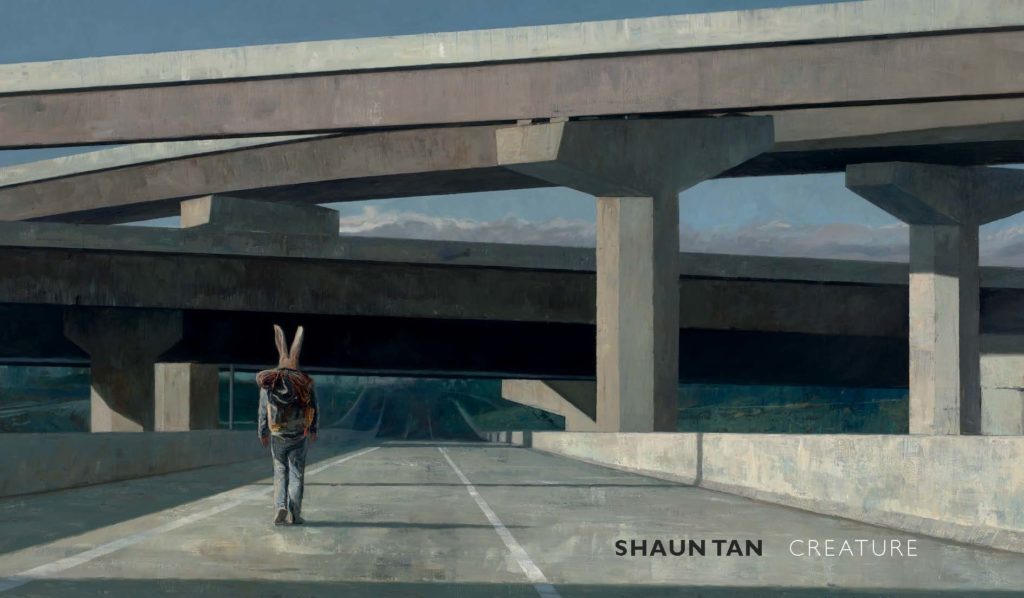
About the Book

Creature: Paintings, Drawings, and Reflections
Written and Illustrated by Shaun Tan
Ages 12+ | 224 Pages
Publisher: Levine Querido | ISBN-13: 9781646142002
Publisher’s Book Summary: From the creator of THE ARRIVAL, a collection of essays illuminating his thoughts and advice for writers and artists, young and old.
Shaun Tan is one of the world’s most highly acclaimed narrative artists—his stories and images are loved by countless young and not-so-young readers around the world. Drawing upon 25 years as a picture book and comics creator, painter, and filmmaker, CREATURE explores the central obsession of this visionary artist, from casual doodles to studied oil paintings.
Beyond sketches for acclaimed works such as THE ARRIVAL, THE LOST THING, and TALES FROM OUTER SUBURBIA, this volume collects together for the first time unseen and stand-alone illustrations, each resonant with unwritten tales of their own. Detailed commentary by the artist offers an entertaining insight into the endless allure of imaginary, non-human beings and what they might tell us about our so-called “normal” human selves. Artists, writers, students, dreamers, and anyone interested in the deeper undercurrents of creativity, myth, and visual metaphor will find inspiration in these pages.
Buy the Book
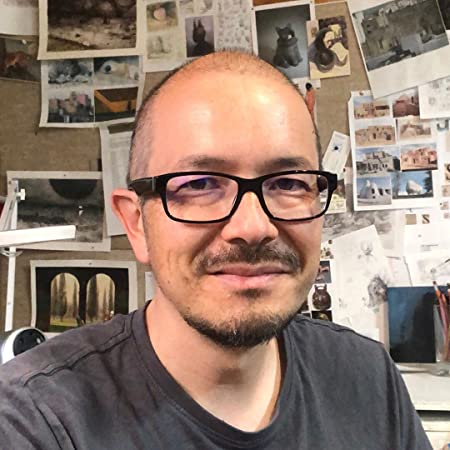
About the Author
Shaun Tan is an artist, writer, and filmmaker from Perth, Australia. Known for his dream-like imagery and fantastical creatures, Shaun’s work is enjoyed worldwide by children and adults alike. Shaun is the recipient of an Academy Award for the short, animated film The Lost Thing, the Astrid Lindgren Memorial Award in Sweden, and the Kate Greenaway Medal in the UK. He currently resides in Melbourne.
For more information, visit him online at www.shauntan.net.
This interview—Shaun Tan Discusses Creature: Paintings, Drawings, and Reflections—was conducted between Shaun Tan and Bianca Schulze. For similar books and articles, follow along with our content tagged with Art, Artists, Inspirational Books, and Shaun Tan.

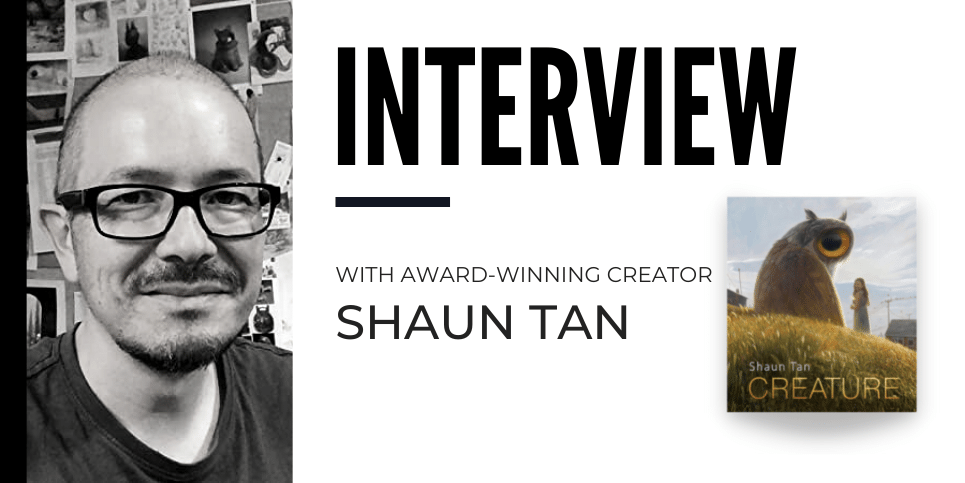
1 Comment
Awesome Work